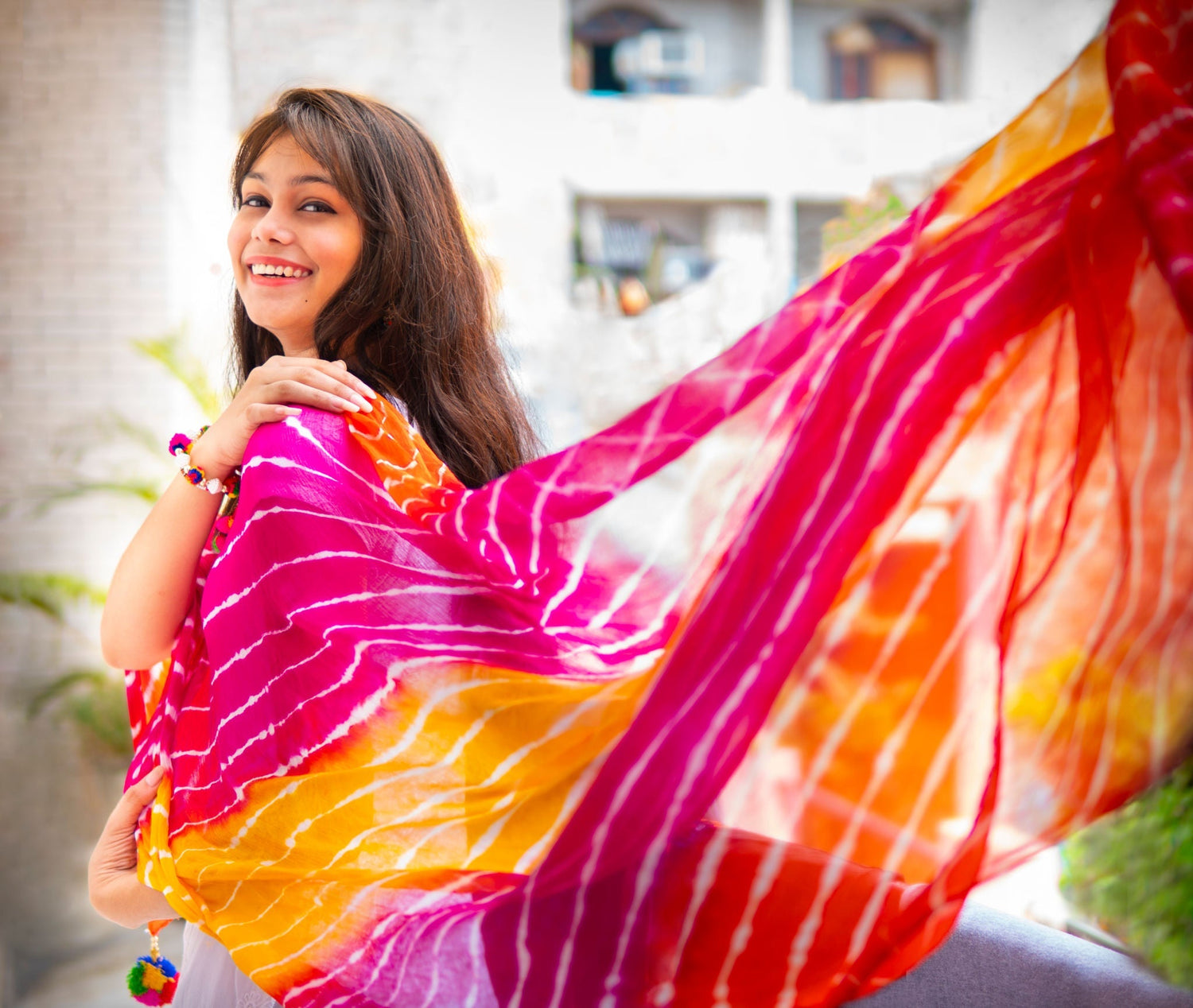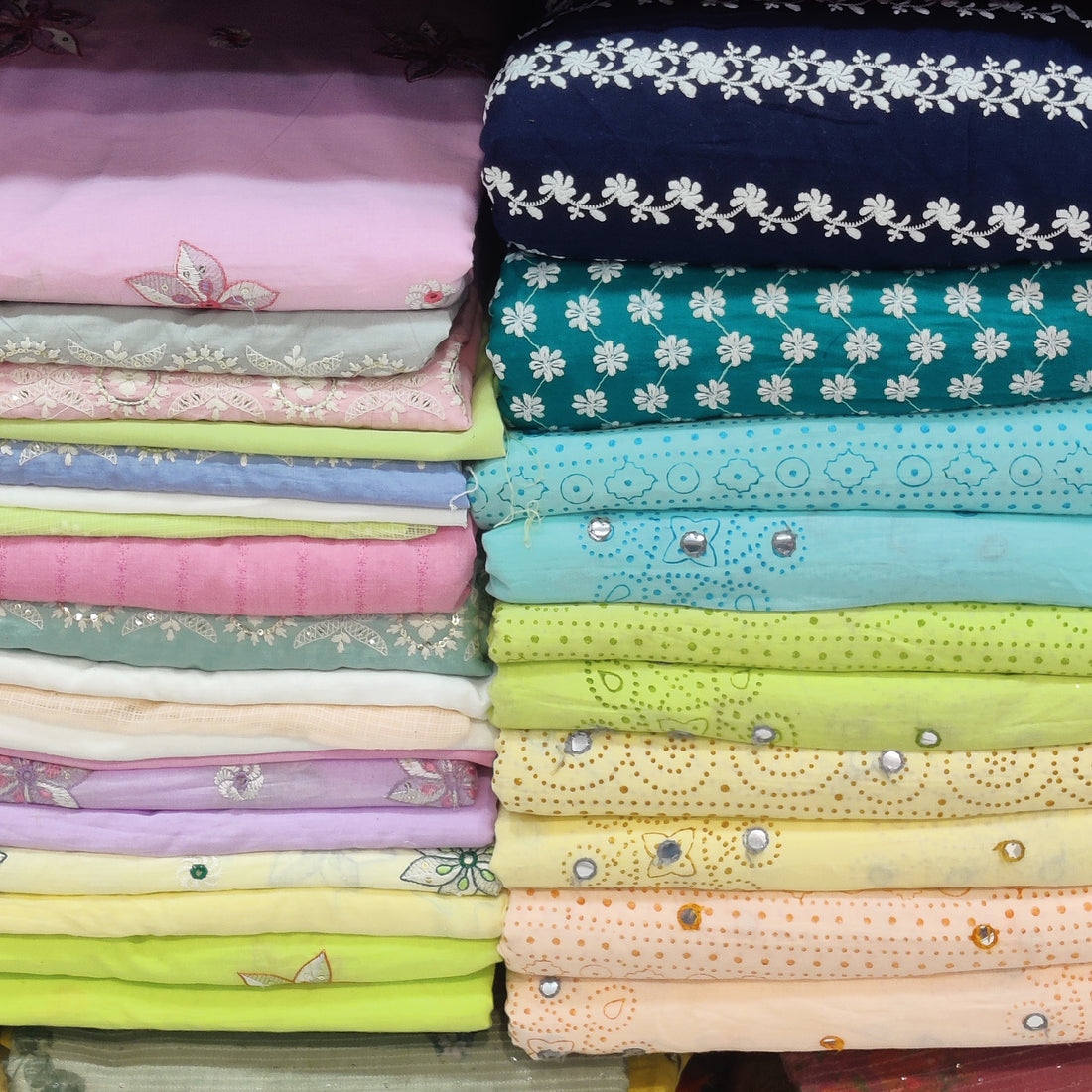Introduction: Indian textiles have a rich history dating back thousands of years. Renowned for their intricate designs, vibrant colors, and unmatched quality, Indian fabrics hold a special place in the world of fashion and textiles. In this article, we'll delve into the unique properties that make Indian fabrics stand out and explore the cultural significance behind them.
Keyword: Indian fabrics
- Diverse Fiber Varieties in Indian Fabrics Indian fabrics are known for their extensive use of diverse fibers. From luxurious silks to durable cotton, each fiber type brings its unique set of properties to the fabric. Cotton, commonly used in sarees and everyday wear, offers breathability and comfort, making it ideal for India's tropical climate. On the other hand, silk fabrics like Banarasi and Kanjeevaram are renowned for their luxurious feel, lustrous appearance, and intricate designs, often worn on special occasions.
Keyword: diverse fiber varieties
- Traditional Techniques and Artistry Indian fabrics are often a product of traditional weaving techniques that have been passed down through generations. Techniques like hand-block printing, tie-dye (bandhani), and embroidery showcase the artistry and craftsmanship of Indian artisans. These techniques not only create visually stunning patterns but also enhance the durability and texture of the fabrics.
Keyword: traditional weaving techniques
- Vibrant Colors and Cultural Significance Color plays a significant role in Indian culture and fabrics. The use of vibrant and bold colors is a hallmark of Indian textiles. Each color carries a cultural significance – red symbolizes fertility and love, while yellow represents spirituality and knowledge. These colors are not only visually appealing but also reflect the rich cultural tapestry of India.
Keyword: vibrant colors in Indian fabrics
- Comfort and Adaptability Indian fabrics are designed to be comfortable and adaptable to different occasions. Light and breathable fabrics like cotton and khadi are ideal for casual wear, allowing the skin to breathe in hot climates. Heavier fabrics like wool and silk offer warmth during colder seasons. This adaptability makes Indian fabrics suitable for a wide range of environments.
Keyword: comfort in Indian fabrics
- Sustainability and Eco-Friendliness In recent times, there has been a growing emphasis on sustainable fashion, and Indian fabrics have risen to the occasion. Fabrics like khadi, known for being hand-spun and handwoven, promote sustainable practices and support local artisans. Natural dyes are also commonly used, reducing the environmental impact of the textile industry.
Keyword: sustainability in Indian fabrics
- Regional Diversity in Fabric Production India's vast cultural diversity is reflected in its textiles. Different regions specialize in distinct fabrics and techniques. For instance, the intricate Patola silk comes from Gujarat, while Kashmir is famous for its luxurious Pashmina shawls. This regional diversity adds to the charm and uniqueness of Indian fabrics.
Keyword: regional diversity in Indian fabrics
Conclusion: Indian fabrics are a true testament to the country's rich cultural heritage and artistic excellence. Their unique properties, diverse fiber varieties, traditional techniques, vibrant colors, comfort, sustainability, and regional diversity make them highly sought after in the world of fashion and textiles. By understanding and appreciating these characteristics, we can continue to celebrate the legacy of Indian fabrics while embracing their timeless appeal.



